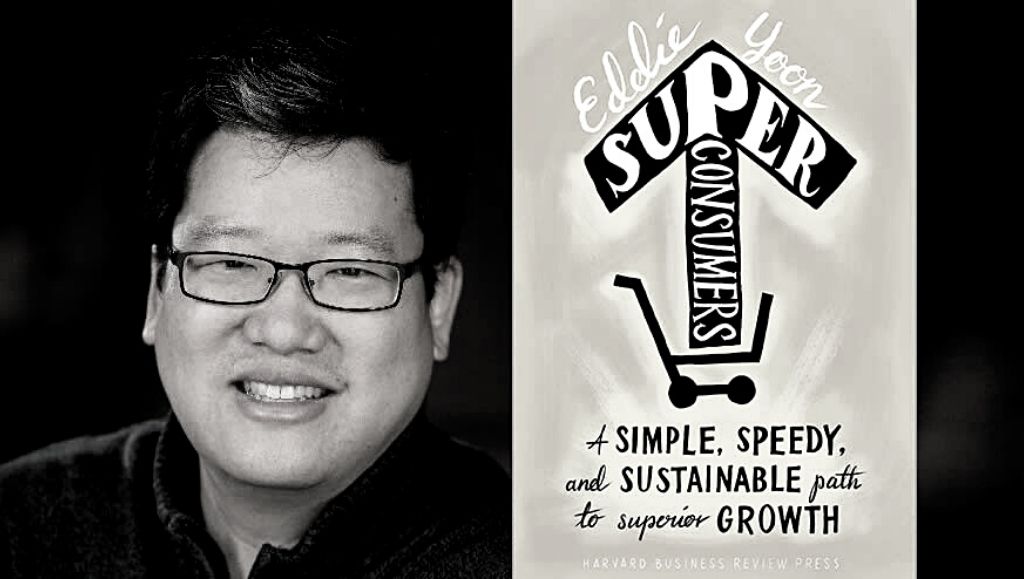Writing a book and marketing it is very similar to founding a product-based startup. When you are building a product you need to have clarity on: who is the product for, are the users and decision-makers the same, how are you going to build engagement and adoption for your product, so on and so forth.
Similarly, when you are writing a book, you are not just an author but an authorpreneur. You need to know – who your readers are, why should they buy your book, where can they find it, how will they get to know about your book, etc.
As an author who has published seven books in the past, with the most recent one titled “The Revenue Marketing Book” released worldwide just two days ago, I’ve had quite a few learnings along the journey.
And that’s the learning that I’m going to share with you now.
Openly. No fluff.
Knowing the purpose of your book
It all starts with knowing the answer to “Why this book?” And the answer to this question cannot just be “Because I felt like it…” or “I have a story to tell” or “I want to become famous or make money”.
While those can still be your intrinsic motivation, in my view, there are three broad purposes of a book or ways in which you can use your book:
- You want to make your book a best-seller. (thus popular and leave a legacy)
- You want to offer something tangible for your community (for example, you might be a consultant or a coach. And you might want to make your book part of your actionable coaching material)
- Establish yourself as a thought leader and thereby use your book like a business card.
There can be other more reasons too. Your journey as an authorpreneur starts only after you have identified your purpose.
The purpose of The Revenue Marketing Book and the role of Kickstarter
Having spent more than a decade as a marketer for various B2B companies, here’s what I have realized:
It doesn’t matter how sophisticated your martech stack is, what your marketing budget is, or how many people you have in your marketing organization.
You have to know:
- What is contributing to your company’s revenue
- What is working
- What needs to be done away with
Many managers think that a great marketing campaign that supports a great product will always work. It is not necessarily so.
It isn’t uncommon to see the biggest of brands betting on big-budget marketing campaigns without being able to attribute it to any tangible outcome. You see them spending millions of dollars on party-crashing a competitor’s mega-event, flying a blimp, and more.
Yes, it does capture eyeballs. Yes, it gets you PR.
But – does it translate into revenue? Does it help in customer acquisition? Is the outcome measurable?
For example, a lot of companies still calculate customer acquisition cost (CAC) holistically, i.e., total cost spent on marketing vs. the revenue outcome or revenue pipeline created. But how would you know what is working for you unless you start measuring revenue outcome by channel, by programs, and more.
So, my purpose for writing this book was to primarily be able to debunk the thought process of marketing being a party planner group or a content creation group and show that marketing can contribute to revenue if we can map the activities to outcomes.
In fact, last year, while working on a client project in the Netherlands, I came with a revenue marketing framework called “The GAME Model”. (Read here to know more about “The GAME Model”)
We have proved that this model works, and wanted to share it with you all through this book.
How Kickstarter kicked into our marketing journey
While I was almost finishing writing ‘The Revenue Marketing Book’ – I had a conversation about the book’s purpose with my cross-cultural brother and collaborator from the Netherlands, Christian Fictoor (who not only writes the Last Words for all my books, but also is my sounding board for all my projects).
(Picture from Christian Fictoor’s table as we were discussing how we can make the free book copies feasible)
We were clear from day one that we wanted to make this book as useful and accessible as possible. And that meant, we will remove every barrier possible for the readers.So, we decided to give the book for free. I have never made any of my previous books to be free, so this was already new.
But the first question in our minds was “Will people value the book if given for free?” We knew the effort that went into keeping this book clean without any fluff, and wanted to make sure we didn’t tamper the perception about the book (if we give it for free).
We believe in the marketing community – so we decided that we are giving the digital copy for free to as many marketers around the world as possible. But that meant we needed some amount of marketing budget to make the free for all reachout feasible. That’s where Kickstarter came into the picture.
Our goal for Kickstarter
In our heads, we had a clear role mapped out for Kickstarter. We didn’t want to go down the traditional route of – If you give us an “x” amount of money we will send you a digital copy or mail you the paperback version.
We also knew there would be questions like, “Why do you want to raise money if you want to give the book for free?”
So our Kickstarter goal was simple – we wanted to raise a certain amount of money we needed to cover our marketing budget, which would allow us to promote the book to at least 10,000 marketers. We identified we would need a minimum of €500 for the promo and that we would divide the €500 equally between us and take the responsibility of promoting the free digital copy of ‘The Revenue Marketing Book’ in regions that fell in our respective time zones.
Both Chris and I had never been involved in crowdfunding before. Therefore, we decided to keep our message straightforward and honest.
We said “Help us raise €500 which is our estimated marketing cost to make the book available for free for as many marketers globally possible.”
We wanted our project backers to essentially help us out in making this massive reach out happen. Yet, deep within we were skeptical of the possibility.
But to our surprise, we exceeded our funding goal within 72 hours of launching our Kickstarter campaign!
The critical role played by Kickstarter
On the last day of our Kickstarter campaign, we were at €525 (105% of our goal). That said, €500+ might not seem like a big funding achievement at the outset, but it was quite a meaningful one. It helped us raise the marketing cost we wanted to give the book for free to at least 10K people.
We had gone on to raise crowdfunding via Kickstarter for a reason. It was to:
- Learn how crowdfunding really works (on the ground reality)
- To see if we could get our trusted community of well wishers/marketers to rally around us and spread the word about the book (remember, I started with the comparison of you being an author is like you starting up?)
And the Kickstarter campaign ended up playing the critical role of building our reader base (I’m not talking about the ones who backed our project with funding).
At the end of the eight-day campaign, we already had 500+ registrations for the free copy of ‘The Revenue Marketing’ through various channels. And it’s still increasing by 20-30 sign-ups every day since then.
Let me share the learning.
1. Why too many Kickstarter projects fail
Unless you have a bunch of people in your list to reach out to, your crowdfunding attempt is going to fail. It’s very similar how a product company would fail if they build a product first and then start searching for the potential buyers. You need to know at least your first 10 go-to people.
A few reasons why several projects on Kickstarter never achieve their goal is:
i. Most of them expect that your project would be found by the audience on the platform (very rare unless your project is already popular and trending on the platform)
ii. Not having a thought-through plan on how you are going to promote your project (the more relevant people see your project, higher the chances of you getting funded)
iii. No homework on if Kickstarter is the right platform for your product
iv. Having very unrealistic funding goals (I too was tempted to set the target as €5000, but thankfully I didn’t)
v. Lack on clarity on how you would reward or show gratitude to your backers
vi. Your project doesn’t come across as credible or even realistic
vii. You never interacted or engaged with any of your existing backers
2. What worked for us
To be honest, on day one, I didn’t have any list of people. My friend, Manish Nepal, who is also the co-host of The ABM Conversations Podcast was my first backer on Kickstarter. And I’m extremely thankful to him for starting the proceedings.
Soon after that, both Chris and I realized that we had to reach out to our respective networks if we had to make this happen (achieve our Kickstarter goal). We made sure we had all the points discussed above (i-vii) covered on our Kickstarter project page.
And as we started our reach out, here are things that became our advantage:
- Our fundraising campaign page was scheduled only for 8 days. A lot of well-wishers suggested that I keep the time frame a little broad (at least for a month). But we went with our gut feeling. We also knew that the amount we were trying to raise was small and we couldn’t afford to let interested backers procrastinate. So the short duration of the campaign helped.
- Since our goal amount was small, it was clear that the purpose meant more than money. To our backers, it was clear that the mission of making the book available for free to as many marketers possible was the key. So, the backers weren’t focused on what they get in return, and instead were looking at what they could do to enable us in their mission. They funded the project, shared with their peers, made announcements on their social media accounts, WhatsApp, etc.
- Our backers built the list of readers for The Revenue Marketing Book. We wanted to be clear from day one, that it’s not just about our backers. So we created a Google Form which any backer or any well-wisher could share with the marketing peers they knew of, as long as they were interested in getting a free copy of the book. Within a week, we had 500+ people filling up the form and wanting the book.
- Lastly, the barrier to entry was minimal. Anyone who wanted to really back us and support us, could do so with as minimum as 2 Euros/USD. It was interesting to see that 37% of the people who funded 10 Euros or more didn’t want anything in return (not even the digital copy of the book).
And now that we have the funds, we would be doing social media campaigns and partnerships with marketing communities to give away the book to the members.
Would the readers value the book if given for free? Well, I don’t have an answer yet. But, what I can promise is – it will be worth your time, if you are a marketer and want to contribute to the revenue of your organization.
So, you be the judge 🙂 Invest the 45 minutes it takes to read this book in one go.
Let me know how you like the book, it’s free on Amazon as promised.



[…] Originally Posted On: https://www.yaagneshwaran.com/blog/critical-role-kickstarter/ […]
[…] writing a book, launching a podcast, giving away a freebie, publishing your video or designs, and launching a project on Kickstarter Patreon, or Product […]
[…] for freelance copywriters. Be it going viral on medium or writing copies that raised huge funds on Kickstarter, or helping product launches, or copywriting billboards–he is someone who has pretty much done at […]